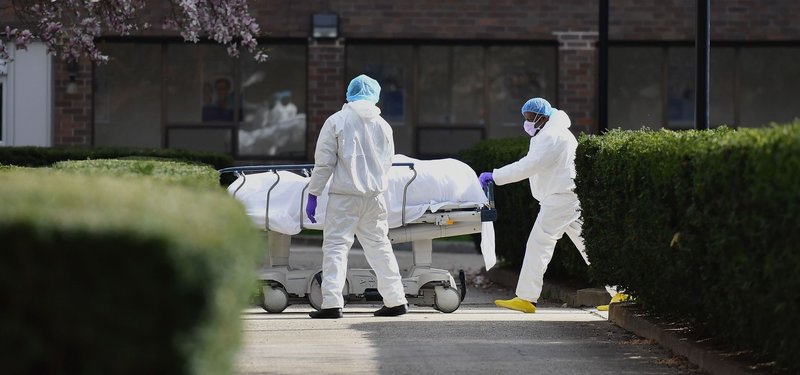
US milestone of 100,000 virus deaths likely by June
- World
- AFP
- Published Date: 12:36 | 05 May 2020
- Modified Date: 12:36 | 05 May 2020
US President Donald Trump now says his worst-case coronavirus scenario would be 100,000 deaths, but the country will probably reach that grim milestone by next month, according to several scientific models -- none of which predict a summertime halt to the virus's spread.
"We're going to lose anywhere from 75,000, 80,000 to 100,000 people. That's a horrible thing," Trump said Sunday evening at a virtual town hall meeting on Fox News.
The Republican incumbent, who is vying for re-election in November, argued that without lockdown measures that have crippled the world's biggest economy, the toll would have been far greater -- more than 1.2 million "at a minimum."
But Trump's end-game figure is likely far lower than the reality -- his own White House says 100,000 to 240,000 Americans will die from COVID-19, the disease caused by the virus.
The country has already seen 68,000 confirmed deaths, and has confirmed about 30,000 new cases a day since early April. The nature of the epidemic is such that more bleak figures are inevitable.
"My personal best guess is that we are going to reach 100,000 deaths around the beginning of June," Nicholas Reich, an associate professor of biostatistics at the University of Massachusetts, told AFP.
Reich's lab has looked at several major epidemiological models created by other institutions to come up with an average trajectory for the epidemic's development.
That average curve indicates the United States can expect to hit 90,000 deaths by May 23. An upcoming update should extend the predictions through the end of May.
"We're seeing pretty consistently somewhere between 5,000 to 10,000 deaths a week -- there are not a lot of reasons to expect it's going to drop quickly," Reich said.
Of nine models cited on May 1 by the US Centers for Disease Control and Prevention, at least three of them predicted that 100,000 fatalities would be recorded in four weeks' time.
Few current models go beyond a four-week window, given the uncertainty of the situation.
Some are more optimistic: the Institute for Health Metrics and Evaluation at the University of Washington predicts a total of 72,000 deaths by June 1, but its authors have said they plan to revise their methodology.
Others -- including two put together by Columbia University in New York -- say the 100,000 mark will be long past by June 1.
One from the Massachusetts Institute of Technology bets on 113,000 deaths by June 1.
Of course, all of these forecasts come with the usual margin of error -- sometimes totalling tens of thousands of deaths.
- Big country -
Epidemiologists consistently caution that no model should be taken on its own, as all of them are built on the basis of different hypotheses.
The most difficult element to factor in is how people will behave over the coming months.
Will they wear masks in public? How many will keep working from home? How many "non-essential" trips will people make to stores or restaurants? When will the country return to pre-pandemic standards of going out, or will it ever?
"We're at an inflection point right now, where some states are opening up, and some aren't," Reich said.
"There's an added layer of uncertainty. (...) It is a complex system with a lot of human behavior that is changing daily."
In the United States, the initial hotspots like New York and New Jersey have been replaced by new ones. In Texas, Illinois and the US capital, the number of new cases is growing.
In California and Florida, that number is starting to level off. The vastness of the country makes the situation more complicated.
"The US is not a single epidemic. It's happening differently in very many different places," William Hanage, an associate professor of epidemiology at Harvard University, told AFP.
To show the behavioral differences in urban and rural zones, or northern and southern zones, researchers in Philadelphia created models for 211 different US counties.
"The epicenters of today may not be the epicenters of tomorrow," said David Rubin, a physician at the Children's Hospital of Philadelphia who also teaches at the University of Pennsylvania.
His team identified heat as a moderating factor. That could help keep the death toll down, but he warned: "Temperature alone is not going to save you."
Even in warmer parts of the country like Miami and Texas, "we see evidence that the risk remains," Rubin said.

